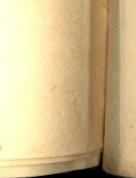308 DOGS AND ALL ABOUT THEM
in the atrium of most Roman villas. In Pompeii a dwarfed Greyhound was certainly kept as a domestic pet, and there is therefore some justification for the belief that the Italian prefix is not misplaced.
In very early times the Italian Greyhound was appreciated. Vandyck, Kneller, and Watteau frequently introduced the graceful figures of these dogs as accessories in their portraits of the Court beauties of their times, and many such portraits may be noticed in the galleries of Windsor Castle and Hampton Court. Mary, Queen of Scots is supposed to have been fond of the breed, as more surely were Charles I. and Queen Anne. Some of the best of their kind were in the possession of Queen Victoria at Windsor and Balmoral, where Sir Edwin Landseer transferred their graceful forms to canvas.
Among the more prominent owners of the present time are the Baroness Campbell von Laurentz, whose Rosemead Laura and Una are of superlative merit alike in outline, colour, style, length of head, and grace of action ; Mrs. Florence Scarlett, whose Svelta, Saltarello, and Sola are almost equally perfect ; Mrs. Matthews, the owner of Ch. Signor, our smallest and most elegant show dog ; and Mr. Charlwood, who has exhibited many admirable specimens, among them Sussex Queen and Sussex Princess.
The Italian Greyhound Club of England has drawn up the following standard and scale of points :
General Appearance-A miniature English Greyhound, more slender in all proportions, and of ideal elegance and grace in shape, symmetry, and action. Head-Skull long, flat and narrow. Muzzle very fine. Nose dark in colour. Ears rose shaped, placed well back, soft and delicate, and should touch or nearly touch behind the head. Eyes large, bright, and full of expression. Body-Neck long and gracefully arched. Shoulders long and sloping. Back curved and drooping at the quarters. Legs and Feet-Fore-legs straight, well set under the shoulder ; fine pasterns ; small delicate bone. Hind-legs, hocks well let down; thighs muscular. Feet long-hare foot. Tall, Coat and Colour-Tail rather long and with low carriage. Skin fine and supple. Hair thin and glossy like satin. Preferably self-coloured. The colour most prized is golden fawn, but all shades of fawn-red, mouse, cream and white-are recognised. Blacks, brindles and pied are considered
THE MINIATURE BREEDS 309
less desirable. Action-High stepping and free. Weight-Two classes, one of 8 lb. and under, the other over 8 lb.
The diminutive Shetland Sheepdog has many recommendations as a pet. Like the sturdy little Shetland pony, this dog has not been made small by artificial selection. It is a Collie in miniature, no larger than a Pomeranian, and it is perfectly hardy, wonderfully sagacious, and decidedly beautiful. At first glance the dog might easily be mistaken for a Belgian Butterfly dog, for its ears are somewhat large and upstanding, with a good amount of feather about them ; but upon closer acquaintance the Collie shape and nature become more pronounced.
The body is long and set low, on stout, short legs, which end in long-shaped, feathered feet. The tail is a substantial brush, beautifully carried, and the coat is long and inclined to silkiness, with a considerable neck-frill. The usual weight is from six to ten pounds, the dog being of smaller size than the bitch. The prettiest are all white, or white with rich sable markings, but many are black and tan or all black. The head is short and the face not so aquiline as that of the large Collie. The eyes are well proportioned to the size of the head, and have a singularly soft round brightness, reminding one of the eye of a woodcock or a snipe.
The Shetlanders use them with the sheep, and they are excellent little workers, intelligent and very active, and as hardy as terriers. Dog lovers in search of novelty might do worse than take up this attractive and certainly genuine breed.

